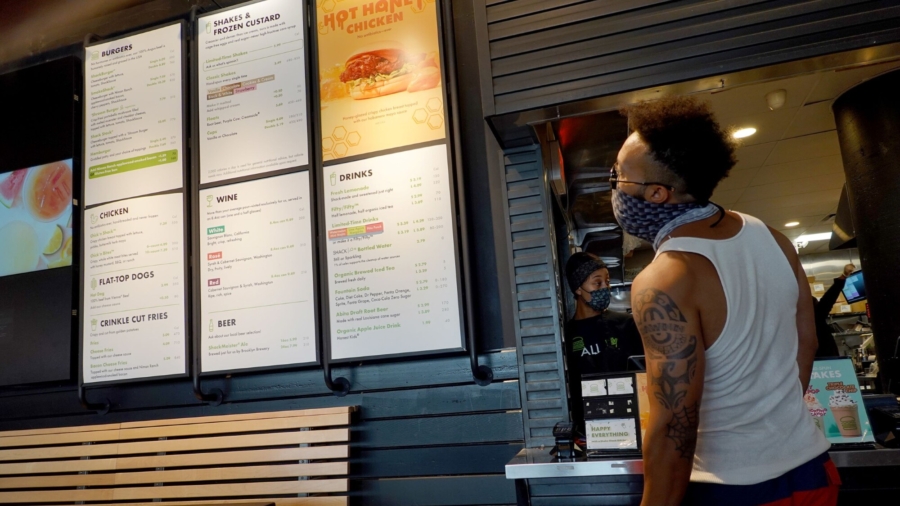Inflation expectations among American consumers rose to an eight-year high in August, according to a new survey from the New York Federal Reserve.
Both the short-term and medium-term inflation expectations in August rose to their highest levels in the history of the series, which dates back to 2013, according to the Sept. 13 survey.
Consumers’ expectations for what inflation will be at the one-year horizon increased from a median 4.9 percent in July to 5.2 percent in August. Americans aged 60 and over reported the highest anticipated rise in prices over the short term, with a median prediction of inflation of 6.0 percent, while the under-40s reported the lowest, at 4.5 percent. Broken down by income, people who earn between $50,000 and $100,000 reported the highest one-year ahead median expected inflation rate of 5.5 percent, while those earning over $100,000 reported the lowest, at 4.9 percent.
Consumers’ expectations for what inflation will be at the three-year horizon increased from a median 3.7 percent in July to 4.0 percent in August. The highest anticipated rise in the three-year ahead rate of inflation was expressed by Americans aged 60 and over, with a median prediction of 4.9 percent. The under-40s reported the lowest, at 3.0 percent. Broken down by income, people who earn between $50,000 and $100,000 reported the highest three-year ahead median expected inflation rate of 4.2 percent, while those earning over $100,000 reported the lowest, at 3.5 percent.
The New York Fed’s survey of consumer expectations, which is based on a rotating panel of 1,300 households, can be a helpful gauge for Fed officials as they weigh the inflation outlook and mull related policy moves. Policymakers at the Fed have been discussing how and when to begin pulling back on the extraordinary support measures provided during the COVID-19 pandemic, with some officials expressing concern that recent inflationary pressures may last longer than anticipated.
Last year, the Fed cut its benchmark overnight interest rate to near zero and began buying $120 billion in Treasuries and mortgage-backed securities each month to bolster the economy. While rate hikes are not yet on the table, Fed officials are mulling when to start paring asset buys, with anticipation building ahead of the Sept. 21–22 meeting of the Federal Open Market Committee, the Fed’s monetary policy decision-making body, for a possible announcement on a tapering timeline.

The consumer inflation expectations survey also comes ahead of the much-anticipated release on Sept. 14 of the Labor Department’s consumer price index (CPI), which will show the extent of upward price pressures in August. Last month’s data showed that consumer prices rose again in July, although at their slowest monthly pace since February, with the CPI jumping 0.5 percent in July from June, after the previous monthly increase of 0.9 percent. Over-the-year consumer price inflation stood at 5.4 percent in July, matching the June figure, which was the highest 12-month spike since 2008.
Global stocks and the dollar held steady on Tuesday morning ahead of the CPI release, which will be closely watched by investors looking for clues as to the Fed’s tapering plans.
Last week, the Labor Department reported that producer prices rose at their highest annual pace on record in August and slightly above expectations, reinforcing broader concerns about rising prices as higher production costs tend to trickle down to consumers. For the 12 months ending in August, the final demand producer price index (PPI) jumped by 8.3 percent, the highest number in the history of the series, which dates back to 2010, the Labor Department said in a Sept. 10 release. On a month-over-month basis, the final demand PPI rose 0.7 percent in August, lower than the 1.0 percent recorded in June and July, suggesting the peak in producer price inflation may have passed.
From The Epoch Times


